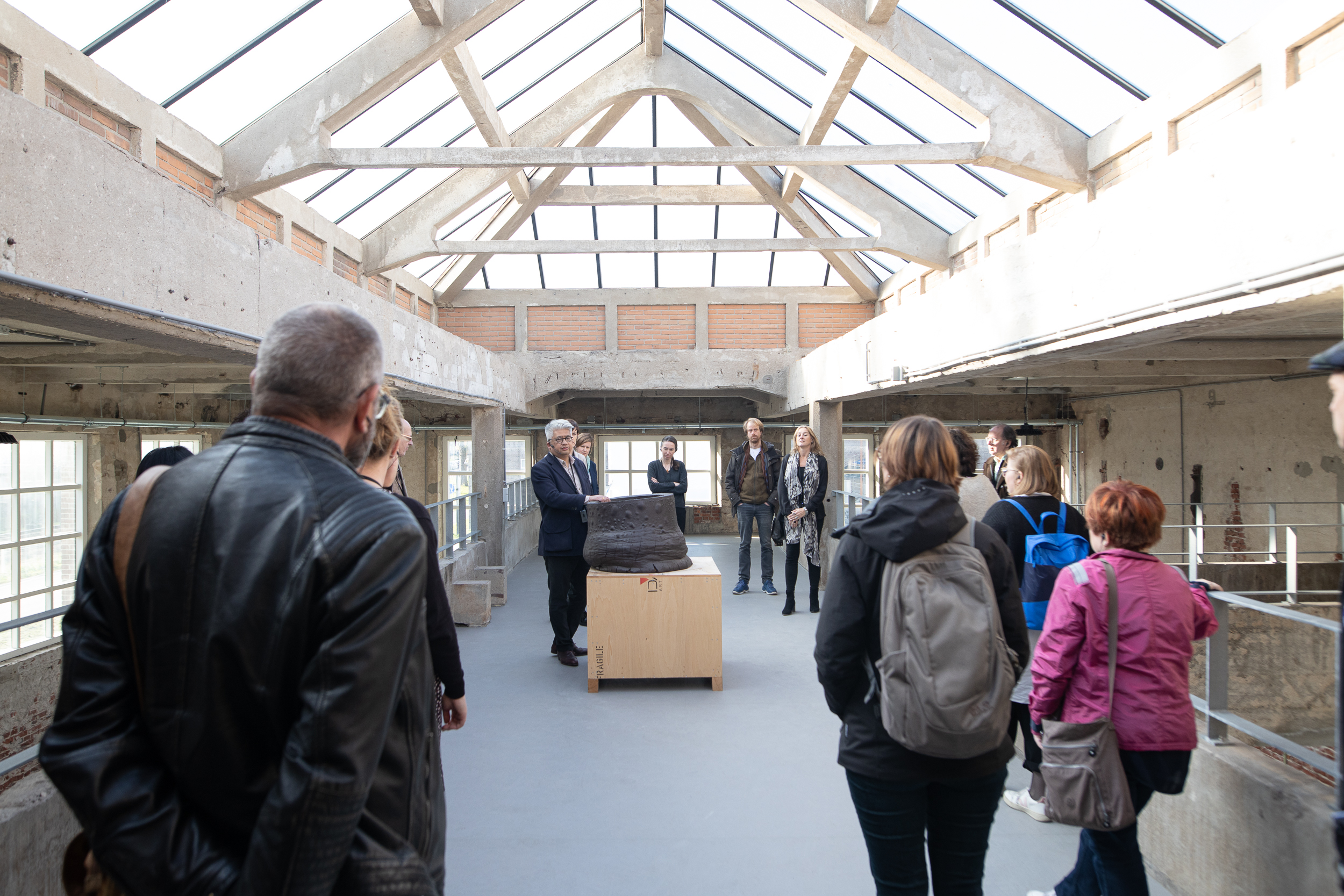
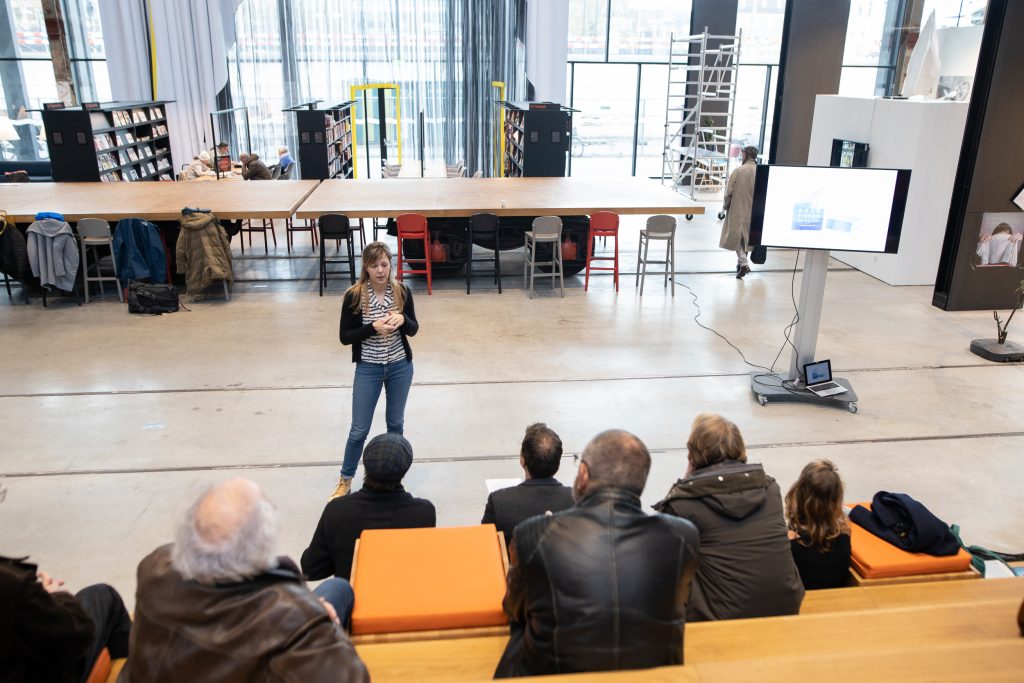
Our road trip begins on 12 November in Tilburg at Kunstloc Brabant. The day’s moderator, Nils van Beek, invites attendees to have a seat on the stair-scape of LocHal. Anneroos Goosen of literary organisation Tilt (Tilburg) briefly talks about the organisation’s desire for writers to connect with their environment, which resulted in the creation of a writer-in-residence programme. As a first step, Tilt invited Ilja Leonard Pfeijffer to their festival, which yielded far more than an attractive publication. As a writer, Pfeifjjer’s presence in the environment spurred many encounters and stories. They have continued this thread at different locations and also with companies through the Tilt Inc. residency programme.

The second place we visit, also in Tilburg, is Gastatelier Leo XIII where Hanneke Bedaux welcomes us along with artist Gilly van Zanten , now in residence here. The Gastatelier is a bit hidden, but, as is often the case for Tilburg, it is an oasis of peace in a residential area. Leo XIII was founded in 1995 when assorted artists began using the building as a studio and a home. Only the auditorium was given a specific purpose. It was designated as an artists’ residency for those artists who focus on the continuation of the 20th century avant-garde, for which research is central. Though peace and concentration are undeniably important here, Leo XIII also regularly draws attention by publishing extensively about their programme on their website, in arts magazine Metropolis M and on social media. For its residency, Leo XIII has partnered over the last two years with a curator to navigate the process of the working period as a duo, which provides a theoretical deepening and positioning of the artistry in the here and now, followed by a presentation weekend. The organisation also collaborates with professional arts education programmes and fellow institutes, such as Kunstpodium T.
Linda Köke from Kunstpodium T explains how this platform was created in 2007 out of the desire to connect with the Fontys students in Tilburg. It all began with an Apprentice/Master’s programme before spreading to more and more academies; initially in Brabant, then throughout the Netherlands and beyond. Logically, other projects were soon to follow that assisted young artists in their professional practice. Bringing practical matters to the fore, for example, in the programme ART part or the annual Day of the Young Artist, where, based on a current question, a curator invites various professionals to share their knowledge with young artists.
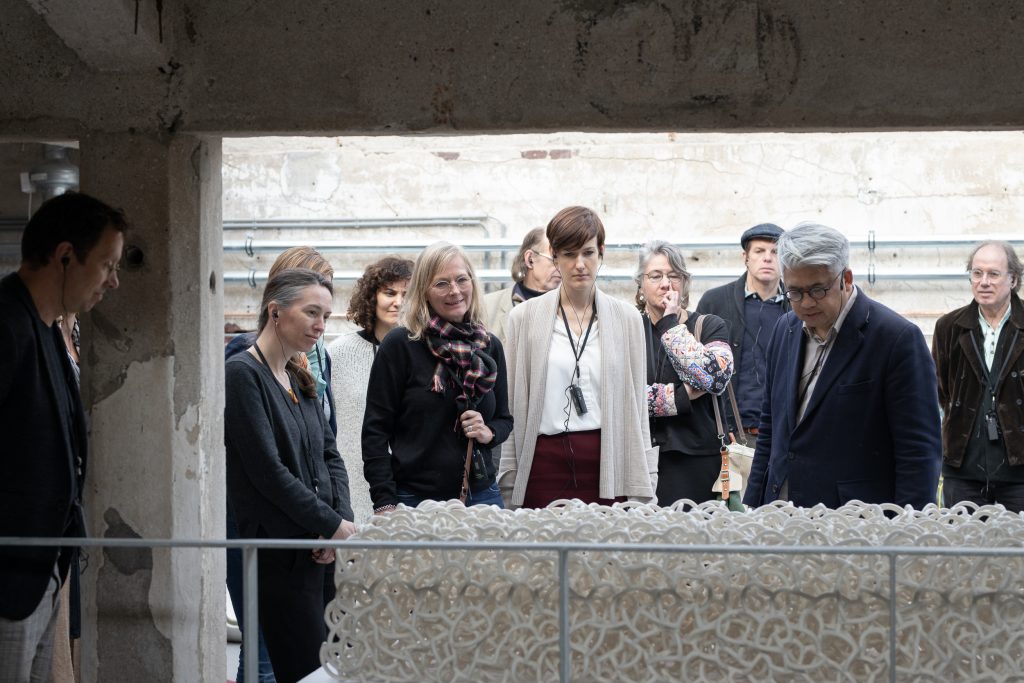
The road trip continues with the bus heading toward Oisterwijk and Sundaymorning@ekwc, where Ranti Tjan welcomes those present with a lunch. Afterwards, Ranti leads a tour of the impressive spaces in this international ceramics work centre. Everything has been thought out. Where it should be entertaining; the shared kitchen, and where it should not: the sober workplace, because this forces you to really get down to work; a good thing. Though it is expensive to work here, this is where you can find the best experts and a certain openness about the knowledge acquired by the residents, sixteen of whom can live and work here at the same time. That has also been taken into consideration. The residency selection begins with the applications they receive from all over the world that are assessed with a simple, but promising premise: it has to be an impossible plan. Why? Otherwise, nothing new would happen. However self-evident the existence of EKWC may be now, it took considerable effort to get here because, when Ranti joined the organisation, the importance of EKWC had been a bit forgotten; even the name had been spelled incorrectly. EKWC left Den Bosch to embark on an adventure in this old factory that is perfect, except for the floor … which was the biggest investment. And the name Sundaymorning? For that, we have the Velvet Underground’s iconic song to thank. Just like that, apparently.
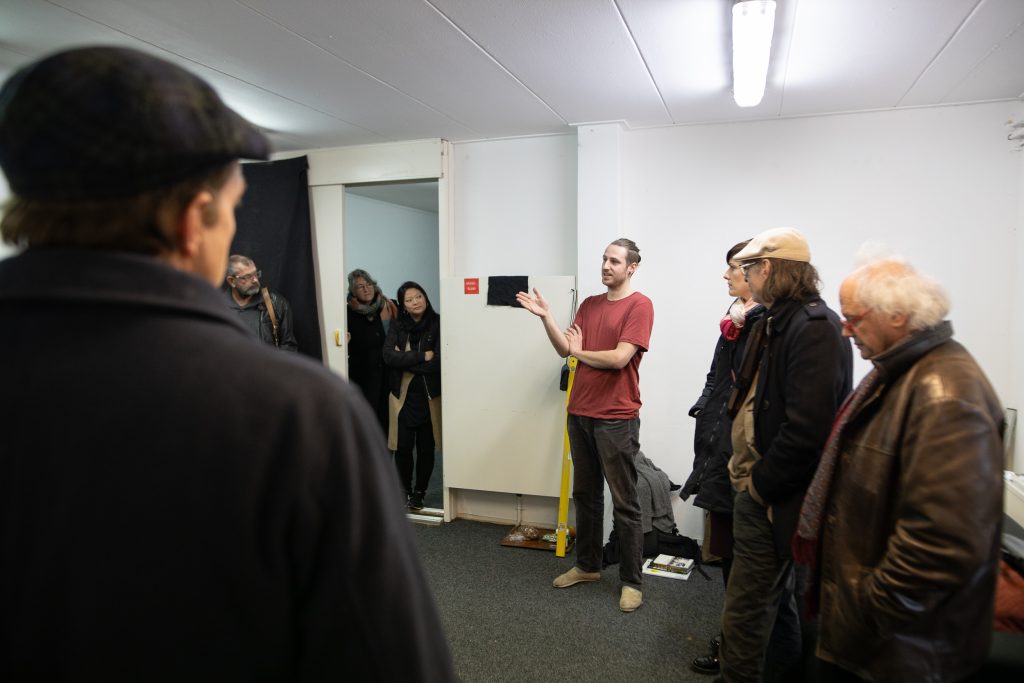
From Oisterwijk onward to Breda and our house call Witte Rook , an artist-in-residence programme that literally straddles the border between the intimacy of a quiet neighbourhood and the hectic pace of the big city. Artist Aalt van de Glind talks about his residency and photographic research for which he installed an on-site darkroom. In addition to the physical location, Witte Rook (represented by Esther van Rosmalen) sees opportunities to use the online space as a platform where artists and fellow institutes can swap stories about their process. It is also a place where new forms of art can arise precisely because they are physically unbound. This facilitates new collaborations, such as those with CEASUUR, a space in Middelburg in the coming year. Artists will be invited here by Witte Rook for a year to explore their work and its relationship to online opportunities.
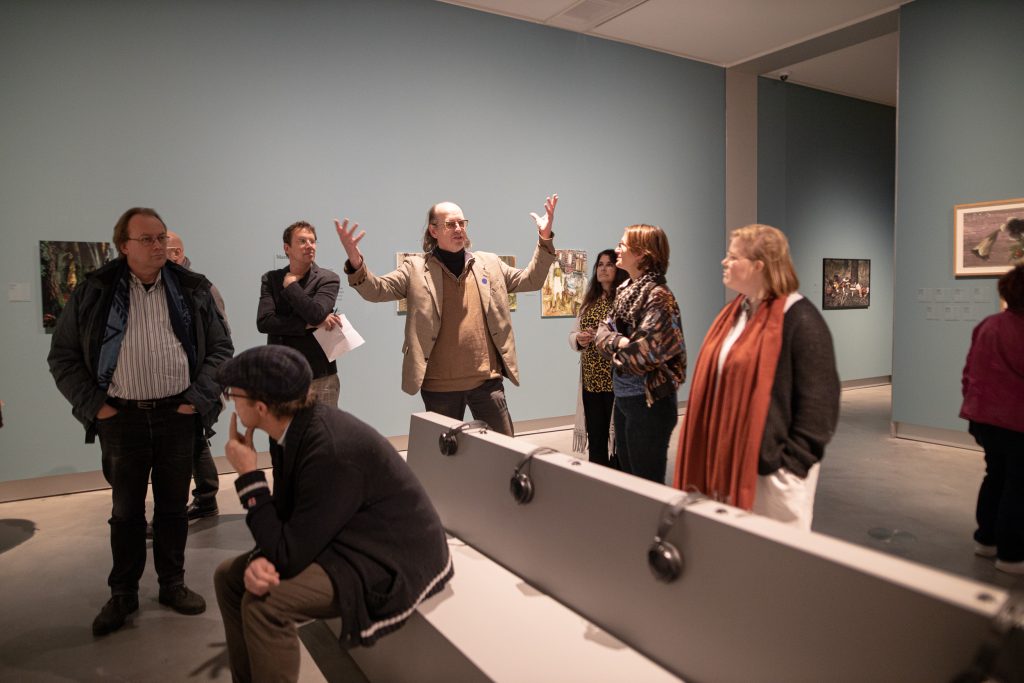
The day comes to a close with a visit to Stedelijk Museum Breda , where Dingeman Kuilman presents on how, as the youngest city museum in the Netherlands, it had to reinvent itself after the dissolution of two previous museums. A finding from this process was that the visual arts had to be unconditionally chosen again. Due in part to the high-calibre artists who live and work here or feel connected to the city and their need for an institutional stage and partially due to the people and organisations that support the visual arts and artists with word and deed. The current exhibition The Witch of Dongen was developed in collaboration with guest curator Ron Dirven. Dirven is also the director of the Van Goghhuis and the Van Gogh AIR programme (both in Zundert), which partnered with contemporary artists in the accompanying exhibition Dongen Revisited. For Stedelijk Museum Breda, the connection between the cultural history of the city and region and contemporary art represents an important starting point.

During the subsequent discussion, led by Nils van Beek, talk surfaces of the organisations’ desire to adopt a positive activist stance in relation to the current artistic climate. Collaboration, as Meike Veldhuijsen of KOP notes, is especially vital in a city to give the young artists, on whom they focus, the feeling that there is a place for them too. Do not wait, adds Anthonie Peeters of Club Solo, create the urgency yourself. When Lokaal 01 disappeared, there was insufficient presentation space, especially for the mid-career artist, and there was a lack of connection with the outside world. But the city council will not fill that for you, as an artist you have to do that yourself. You also have to take other paths that you initially did not have in mind as an organisation, and then you have to mobilise the politics, while staying in control yourself. Club Solo and Witte Rook organised a debate and a discussion on this topic to hold up a mirror to the politicians, reminding them that they have to delve into the matters that they make decisions about. Theo Andriessen of Breda Photo agrees that a city has to invest in climate and talent by attracting young photographers from all over the world with an international talent programme. A situation wholly unfamiliar to Marieke Habraken-Meijers from AnnAtopiA / De Boshut located in the relatively calm village of Baarle, where the residency is set back in the woods. A place where artists can be completely removed from the hectic pace of urban life and its pressures. With that, day 1 of our road trip draws to a close, but it will continue 14 November 2019.
Author: Esther van Rosmalen Editor: Kyki Vermaire Photographer: Tim Meijer

